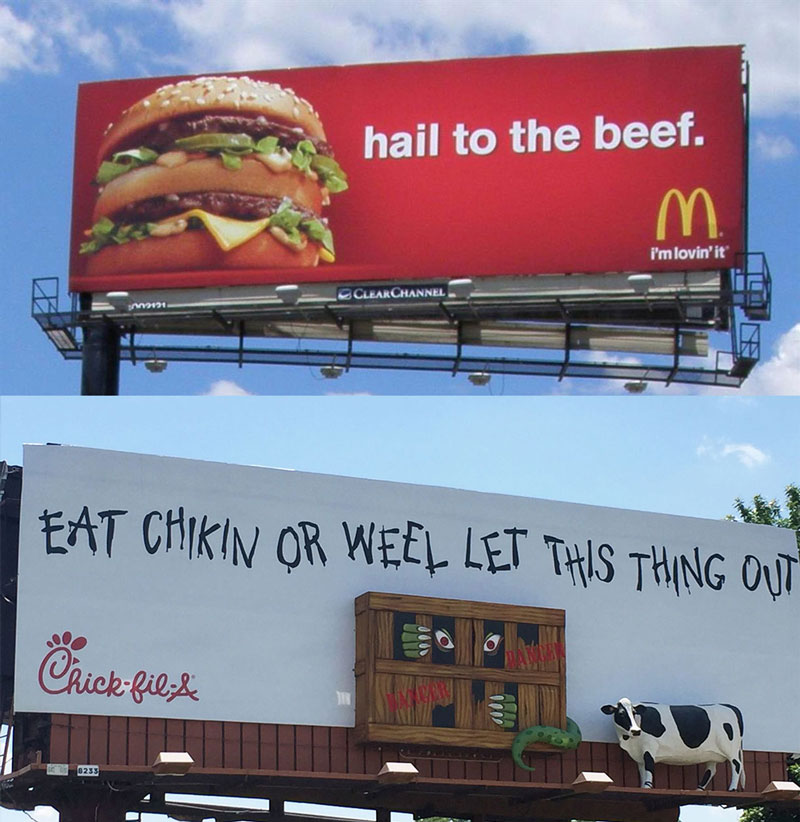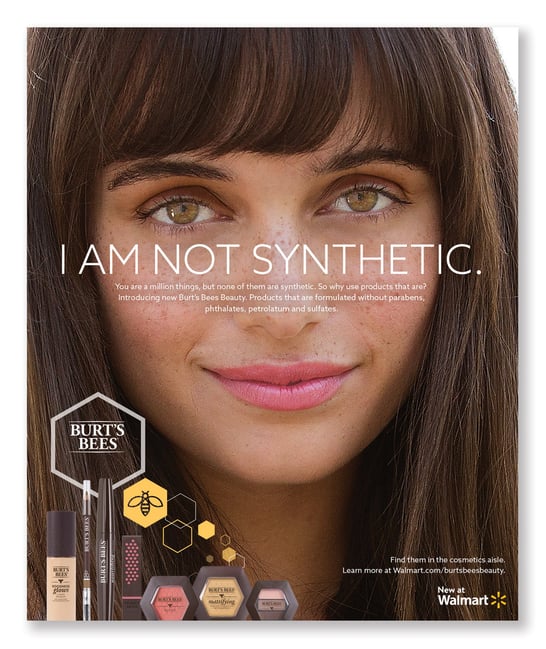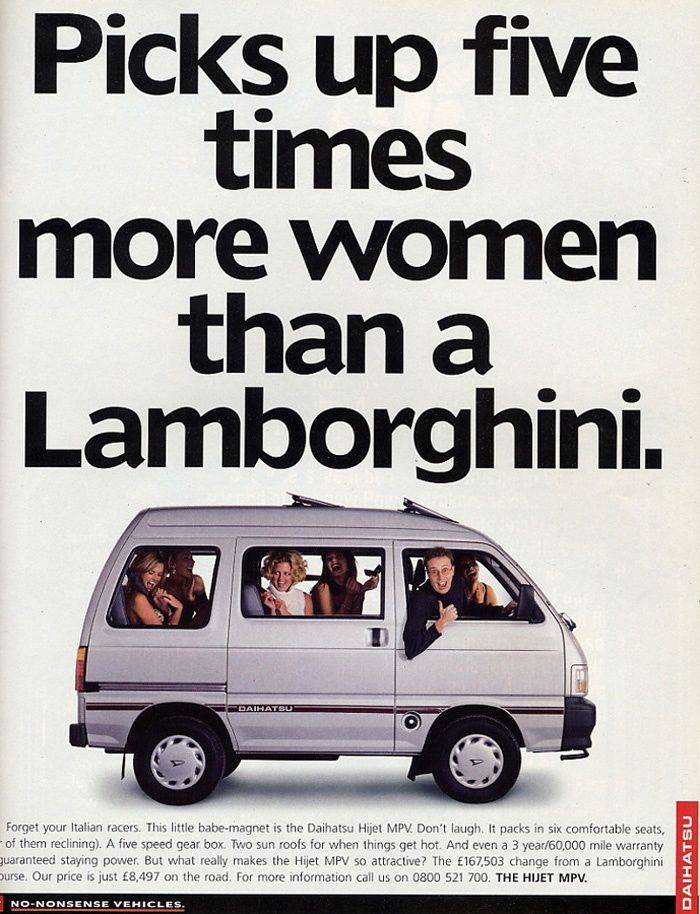When you’re in a crowded room, it’s still easy to pick out your best friend’s voice. You’ve known them for years, so it’s easy to listen for the particular tone, phrasing and cadence. Just as all humans have a unique speaking voice, so do brands.
Any kind of communication from a brand is part of its voice. That means radio ads, social posts and boring internal emails. If it’s “from” the brand, it’s building the voice.
Why Is Brand Voice Important?
A brand voice helps you distinguish your brand from the competition. It keeps your communication consistent and it appeals to your audience.

In the ad above, Porsche isn’t trying to be serious. Porsche is being playful, it’s communicating with its audience that Porsche is a luxury and a dream, and it does that with a casual, to-the-point tone.

Conversely, this ad is deadly serious. It makes an impact. It wants to stun the audience. It is also to the point, but the goal and the voice are distinct.

Consider the difference between these two billboards. Chick-Fil-A and McDonalds both have similar audiences. They are both in the same industry. But they each have a powerfully unique brand voice.
Even without the logos, you would be able to recognize the individual brands by reading the text only. That is the power of an effective brand voice. It invokes your entire company, customer experience, products and services with words alone.
The 6 Essentials of a Brand Voice
1. Start with Your Mission
If you’re starting from scratch, building an entire brand voice from nothing can be intimidating. Start with the foundation of your company: Look at your mission statement. Review your values. Create a list of the things that make your company unique.

Burt’s Bees has a clear mission statement; it’s devoted to providing all-natural products. Look at the ad above. The main idea is in line with that mission. It’s products are not synthetic. The customers who use them are all-natural by proxy
This mission is interwoven with Burt’s Bees brand voice. On every ad, it harkens back to the natural world. The tone it takes is casual and friendly, it speaks directly to the customer and asks them questions. “Natural” can mean a lot of things. It can mean honesty, confidence, when people “act natural,” what do they broadcast? Thats Burt's Bees voice.
In marketing, every word is a conscious choice of the brand. A brand voice helps give those choices a path.
2. Understand Your Audience
Communication is a two-way street. Your brand voice could perfectly communicate your values and mission. But if it does not resonate with your target market, it will be useless.

The ad above is funny. Its message is clear. It has a distinct brand voice. It’s memorable. But it doesn’t resonate with me.
I’m a single, female copywriter. I’m not really interested in picking up chicks. This ad doesn’t communicate a benefit for me.
That’s because it’s not supposed to. I’m not the target audience. The copywriter who wrote this ad wasn’t trying to connect with my demographic—the brand and the product were created for someone else.
That is why it is so important to understand your audience before you create your brand voice. It’s important to communicate in a way that resonates with the people who buy your stuff.
3. Research the Competition
Your competition can give you hints about your industry’s market. Let’s analyze some makeup ads.

Both ads have similar visual appeals. Similar layouts. Even similar colors. The concept is not different—the brand voice is.
Maybelline is targeting a younger audience. The words in the ad are more casual and playful. Their brand is fun, lighthearted.
On the flip side, Estee Lauder’s advertisement is targeting a more mature audience. It’s simple, refined. Their brand is sexy, intelligent.
Understanding the similarities and differences between each brand’s strategy can help you understand which niche you should focus on. In comparison to the competition, where are your strengths? Play to the parts of your brand that make you different. Connect with the audience that will appreciate those differences.
4. Create a RuleBook
No one person creates a brand voice. Even in the smallest of organizations, influences come from every employee. The CEO, the intern running social media, the recruiter putting out job descriptions—they each have a part to play in creating a brand voice.
Each individual has their own unique writing style and viewpoint of the brand. To prevent each person from creating separate, distinct brand voices, you must create a brand book.
Create rules to keep your brand voice consistent. Answer questions like:
-
- Is it alright to refer to the company as a collective? (I.E. “At Presh Marketing, we…”)
- Does the brand speak in third or second person? (I.E. “Solutions you need” vs “brand solutions for IT”)
- Does the brand use casual language or slang?
- Should the brand avoid certain terms (I.E. Starbucks sizes are not “small, medium and large” but “tall, grande, and venti”)
- Does the brand follow AP style? Are there exceptions?
- Do you refer to customers as “customers” or rather “clients” or “partners”?
- What is the general tone one should use when writing for the brand?
Answering questions like these can help different people stay on course. It keeps your brand consistent, distinct, and memorable.
5. Find Three Adjectives
If all else fails, sit down with the people at your company who are leaders of the brand. The C-Suite, marketing, or an outside agency can help. Ask each person to write down three adjectives that describe the company as a whole.
The CEO might write: successful, long-lasting, fun
The Director of Marketing might write: creative, quick, people-oriented
Share your answers with the team and agree on three final adjectives from everyone’s suggestions. Duplicates should be given special attention—if more than one person writes down the same (or similar) adjective, it is likely already part of your brand voice.
6. Get Outside Help
If you need help, an outside agency can help. At Presh, we specialize in building brands for solution providers. We offer full-service marketing—from ideation to campaign launch and lead generation. If you’re looking for assistance building a brand that audiences recognize, contact us today.